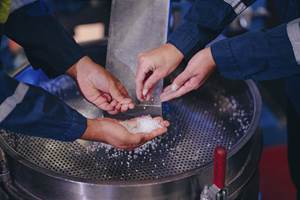Latest PCW Update on Tropical Storm Harvey: Polyolefins
Several monomer and resin shutdowns have been underway with several coming before then Hurricane Harvey made landfall.
Our industry friends at PetroChemWire (PCW) have been more busy than usual due to the devastating effects of Hurricane turned Tropical Storm Harvey and the flood warnings that remain in effect for Southeastern Texas and Southwestern Louisiana—a region that’s home not only to major refineries, but also to several major monomer and resin production facilities.
PCW has been on top of it from the start and its latest update issued August 30, provides the latest stoppages but also a ‘blow-by-blow’ of all production interruptions or shutdowns starting Thurs., Aug. 24.
Meanwhile, here are some comments on polyolefins and pricing from Michael Greenberg, CEO of Plastics Exchange, The. He also commented on the thorough and continuous coverage of the storm by PCW and, as is our sentiment at PT, expresses good wishes that the affected Gulf residents and “our” petrochemical industry colleagues are safe, secure and able to quickly recover from the catastrophic storm.
Then suddenly Hurricane Harvey blasted into town as a real game changer.
● Ethylene, Polymer-grade Propylene (PGP): The monomer markets were very active with spot ethylene for August gaining strength by the end of the week, ending at 26¢/lb—a 2¢/lb increase. Spot PGP prices continued to rise to 41¢/lb—also a 2¢/lb increase. August PGP contracts finally settled with a modest .005¢/lb increase to 39.5¢/lb. “The increase could have been more—it’s rare to see spit exceed contracts in settlement,” Greenberg reported.
● PE: Referring to the 3¢/lb increase that PE suppliers have been trying to push through in August prior to this epic event and when market fundamentals were not supporting an increase, Greenberg noted:
“The polyethylene market is currently quite interesting. Supply/demand fundamentals had been heavy and did not support the increase…While producers invoiced sales including the increase, a caveat allows for a rollback of pricing if the increase fails to implement. A major consultancy suggested that contracts should roll flat, and we agreed with that assessment. Then suddenly Hurricane Harvey blasted into town as a real game changer.”
Given the significant petrochemical production shutdown and resin supply disruption, Greenberg sees the 3¢/lb increase easily going through. Moreover, even though only two PE suppliers had issued a 4¢/lb hike, effective Sept. 1, Greenberg and other industry pros venture that additional upside may be justified based on the potential for sustained production disruption.
● PP: Greenberg concedes, as do other industry experts, that while the PP market will also see a supply disruption, it will be to a lesser extent than the PE chain. “Still, since PP supplies have already been tight—especially copolymer, we expect PP prices to also move higher in the aftermath. PP producers have been seeking at least a 3¢/lb increase (profit margin) above and beyond the change in Auust PGP costs. The cost-push increase was only a half-cent this month, and the additional margin gains were not necessarily secured before the hurricane hit, though this could vary amongst market participants….We have already been bullish on PP prices and since monomer costs have continued to rise to a level that would already justify a September increase, coupled with this added weather dynamic, PP will likely move higher and also bring the elusive margin gain within reach,” reported Greenberg.
Following the Labor Day weekend, we aim to have some further reporting and projections on product availability, and the pricing scenario for commodity resins PE, PP, PS, PVC, and PET as well as commodity engineering resins ABS, PC, nylons 6 and 66 from our expert sources at Resin Technology, Inc.
Related Content
Fundamentals of Polyethylene – Part 6: PE Performance
Don’t assume you know everything there is to know about PE because it’s been around so long. Here is yet another example of how the performance of PE is influenced by molecular weight and density.
Read MorePrices for PE, PS, PVC, PET Trending Flat; PP to Drop
Despite price increase nominations going into second quarter, it appeared there was potential for generally flat pricing with the exception of a major downward correction for PP.
Read MorePrices of PE, PP, PS, PVC Drop
Generally, a bottoming-out appears to be the projected pricing trajectory.
Read MoreImproving Twin-Screw Compounding of Reinforced Polyolefins
Compounders face a number of processing challenges when incorporating a high loading of low-bulk-density mineral filler into polyolefins. Here are some possible solutions.
Read MoreRead Next
For PLASTICS' CEO Seaholm, NPE to Shine Light on Sustainability Successes
With advocacy, communication and sustainability as three main pillars, Seaholm leads a trade association to NPE that ‘is more active today than we have ever been.’
Read MorePeople 4.0 – How to Get Buy-In from Your Staff for Industry 4.0 Systems
Implementing a production monitoring system as the foundation of a ‘smart factory’ is about integrating people with new technology as much as it is about integrating machines and computers. Here are tips from a company that has gone through the process.
Read More
























